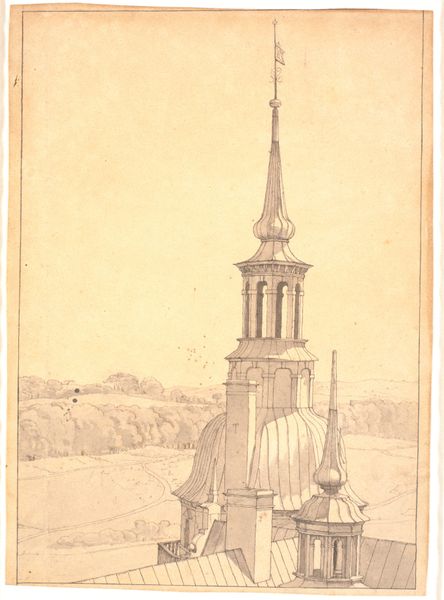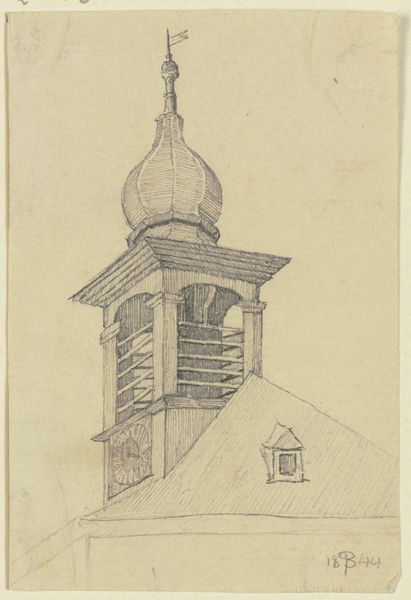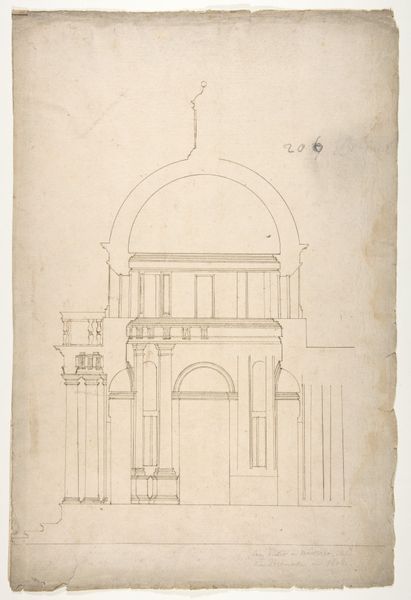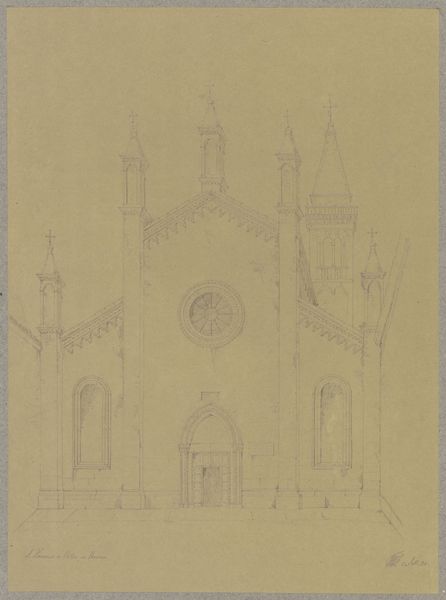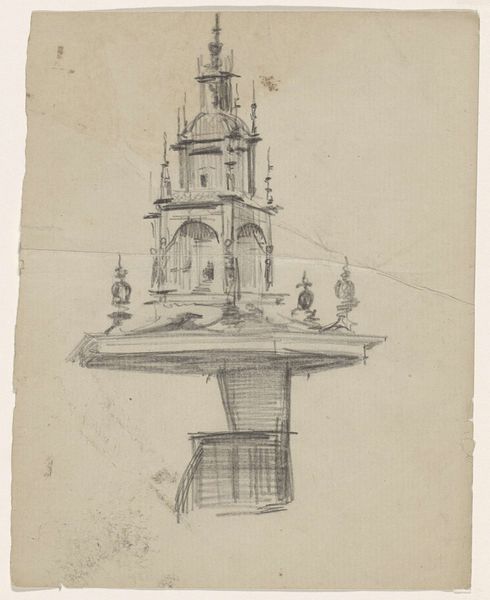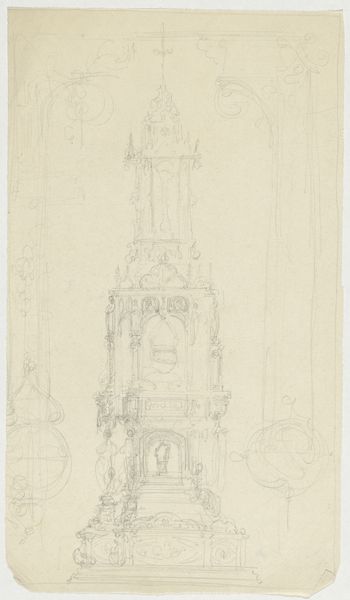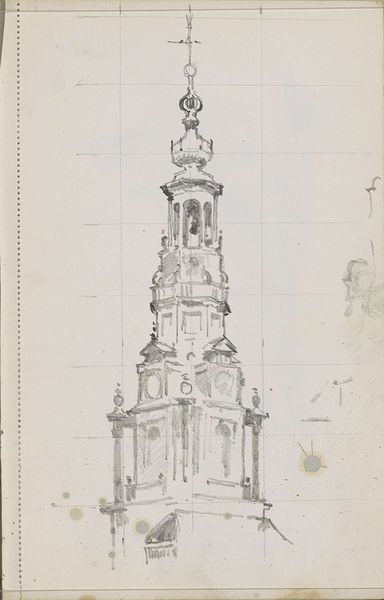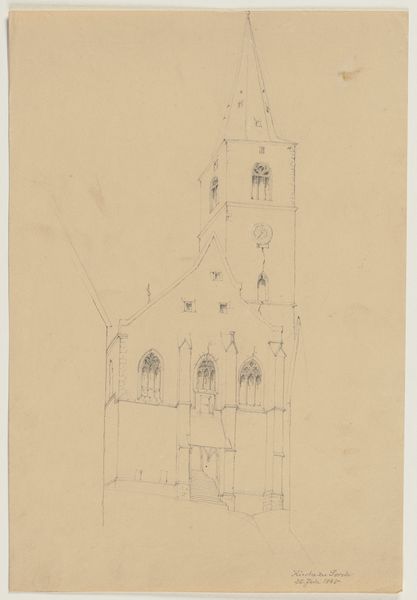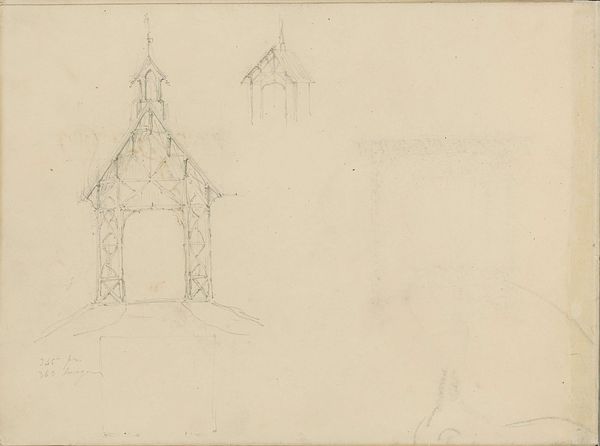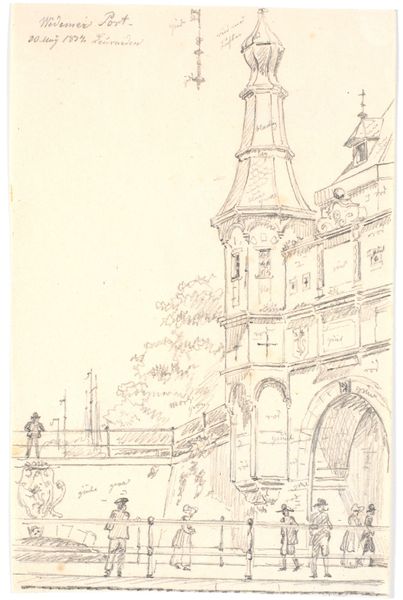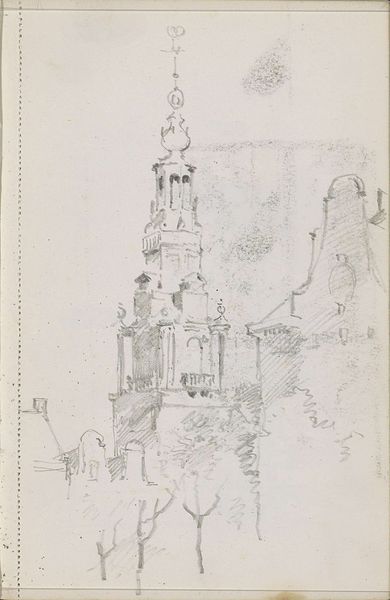
drawing, pencil, architecture
#
drawing
#
landscape
#
etching
#
romanticism
#
pencil
#
cityscape
#
architecture
Dimensions: 143 mm (height) x 100 mm (width) (bladmaal)
Curator: Before us, we have Christen Købke's pencil and etching drawing from 1834, "Et af de to små tårne på Frederiksborg" which translates to "One of the two small towers at Frederiksborg." Editor: The starkness is striking, a kind of pre-photographic document. Look at that thin, pale application of medium. There's something so minimal, almost skeletal, in its depiction. It focuses my attention acutely on the architectonic forms. Curator: Købke's rendering speaks to the rising Danish national romanticism of the time, when historical architecture became symbols of collective identity, of national memory. The Frederiksborg Castle was especially meaningful after its destruction by fire in 1859 and the subsequent reconstruction efforts, becoming a beacon for the past. Editor: It is all lines! Look closely: he articulates the texture, the shape, and the light exclusively using a delicate web of carefully placed lines. No shading or blending, just pure structure emerging through mark-making. It really showcases how powerfully form can be conveyed through suggestion alone. Curator: The viewpoint elevates us, and by emphasizing verticality, Købke's drawing draws us to consider spiritual and intellectual heights, toward progress and the sky, beyond the merely mundane earthly life. Towers throughout time are associated with not just protection and outlook but also transcendence. Editor: Absolutely. Consider the strategic use of negative space around the towers too—it makes them feel almost fragile, ethereal. You have this tangible architecture rendered in such an open, almost floating composition. That contrast is critical to the mood. Curator: In those fragile strokes, we can perhaps sense a delicate interplay between national pride and perhaps also the recognition of the fleeting nature of time. We see it also in how these small details are not quite symmetrical or "perfect," leaving that humanness and reality in view. Editor: It is true: that visible pencil grid is fascinating. It speaks to process, to careful calculation. It transforms the act of seeing into an analytical procedure, revealing the intellectual scaffolding beneath artistic representation. Curator: The image gives insight into Købke's artistic development and the way 19th-century Danish artists were processing ideas of nationhood through detailed architectural renderings. Editor: Indeed. Beyond its subject, it is that remarkable precision in execution that has made the greatest impact for me.
Comments
No comments
Be the first to comment and join the conversation on the ultimate creative platform.
